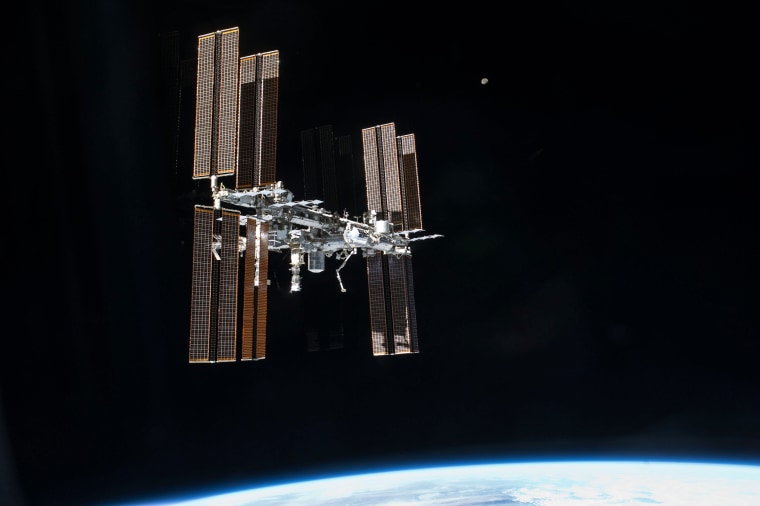Astronauts aboard the International Space Station were forced to take shelter in a pair of space capsules Monday morning after a cloud of space debris threatened to pass near the orbiting outpost.
Mission controllers are closely monitoring the debris and advised the astronauts to seek refuge in the event that a collision would force them to undock from the space station immediately and return to Earth.
NASA did not specify what caused the debris field, but the State Department confirmed Monday that a Russian weapons test that intentionally destroyed a Soviet-era satellite created more than 1,500 fragments of space junk in orbit.
Secretary of State Antony Blinken said the test "clearly demonstrate that Russia, despite its claims of opposing the weaponization of outer space, is willing to jeopardize the long-term sustainability of outer space and imperil the exploration and use of outer space by all nations through its reckless and irresponsible behavior."
Russia confirmed it had conducted the test, but rejected any suggestion it had posed a danger to the astronauts.
“The U.S. knows for certain that the resulting fragments, in terms of test time and orbital parameters, did not and will not pose a threat to orbital stations, spacecraft and space activities,” Moscow's defense ministry said Tuesday.
During the emergency maneuver, NASA astronauts Tom Marshburn, Raja Chari and Kayla Barron, along with Matthias Maurer of the European Space Agency, sheltered in their Crew Dragon spacecraft, while Russian cosmonauts Anton Shkaplerov, Pyotr Dubrov, and NASA astronaut Mark Vande Hei sheltered in their Soyuz capsule.
The crew members later emerged from their spacecraft, but mission controllers advised them to keep some hatches between the main space station modules closed as a precaution. NASA said the space station is passing through or near the debris field every 90 minutes, and agency officials will continue to assess the situation.
NASA Administrator Bill Nelson called the incident "unconscionable," adding that the satellite fragments threaten the lives of all astronauts living and working in space, including the seven individuals at the International Space Station and three crew members aboard China's Tiangong space station. He said that the explosion like created hundreds of thousands of pieces of debris less than three inches in diameter in addition to the larger, trackable pieces of debris.
In a statement late Monday, Nelson said he was outraged by Russia's actions.
"With its long and storied history in human spaceflight, it is unthinkable that Russia would endanger not only the American and international partner astronauts on the ISS, but also their own cosmonauts," he said.
U.S. Army Gen. James Dickinson, commander of the United States Space Command, also condemned the anti-satellite test, saying the resulting debris "will continue to pose a threat to activities in outer space for years to come."
"Russia has demonstrated a deliberate disregard for the security, safety, stability, and long-term sustainability of the space domain for all nations," Dickinson said in a statement. "Space activities underpin our way of life and this kind of behavior is simply irresponsible."
The State Department linked the weapons test with other recent aggressive actions, including Russia building up military troops on Ukraine’s border. Blinken said the U.S. would coordinate with its partners and allies on how to respond.
“We hoped for a relationship with Russia that is more stable and more predictable,” he said. “But hope is not a strategy and we are going to watch very closely as the Russian Federation chooses its actions in the coming days and weeks.”
The Department of Defense regularly tracks more than 27,000 pieces of space junk, including approximately 23,000 objects larger than a softball. Over the course of the space station’s history, NASA has had to perform more than 25 special maneuvers to dodge orbital debris that passed too close to the orbiting outpost.


